When it comes to the animal kingdom, many people might think of fierce predators or majestic creatures as the stars of the show. But let’s not overlook the lesser-known heroes of the wild: the protective parents, friends, and even entire communities that go above and beyond to keep each other safe. Animals have developed some pretty incredible—and sometimes downright surprising—ways to protect their loved ones. Whether it’s through clever tactics, sheer strength, or just a whole lot of heart, these protective instincts are a testament to the complexity and depth of animal behaviors. So, buckle up as we explore 14 animals that take protectiveness to a whole new level.
1. Elephants
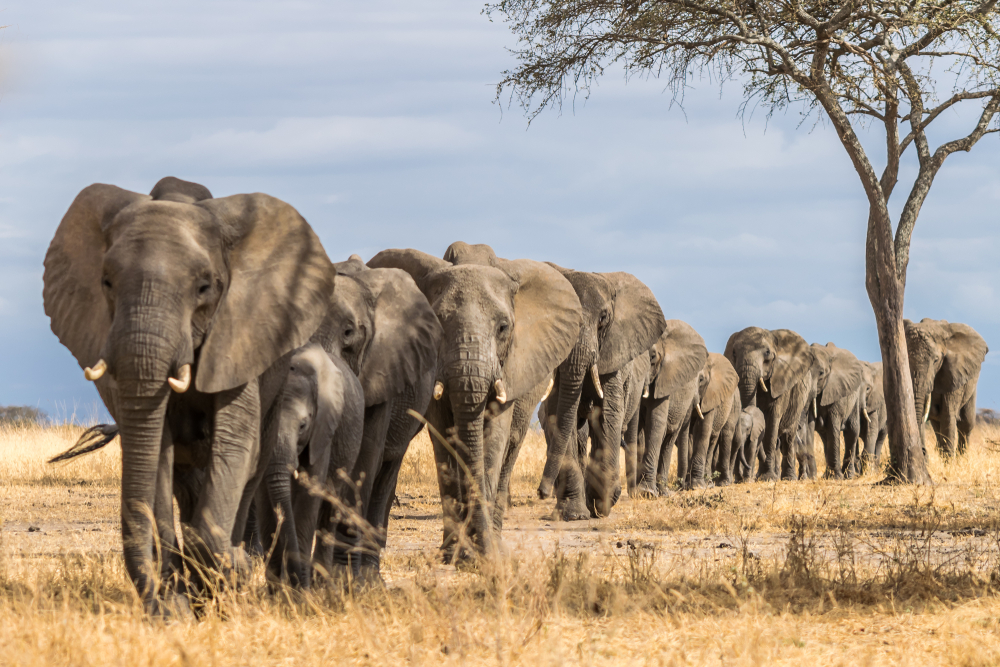
Elephants are well-known for their strong family bonds and protective nature, especially when it comes to their young. These gentle giants form matriarchal societies where the oldest and wisest female leads the group. If a threat approaches, the adults will form a protective circle around the calves, trunks raised and ready to defend. According to Animal Researcher, it’s not just the mothers who take on this guardian role; the entire herd, including aunts and cousins, will pitch in to protect the little ones. This community-style defense mechanism ensures that everyone looks out for each other, making their group dynamics fascinating.
Elephants also show amazing empathy, regularly comforting each other in times of distress. This emotional intelligence is part of what makes them so exceptional at protection. They even mourn their dead, which is a profound testament to their deep connections. If you’ve ever seen an elephant gently using its trunk to help a struggling calf, you’ll know that their protective instincts are second to none. They remind us that protection isn’t just about physical defense; it’s about emotional support as well.
2. Meerkats
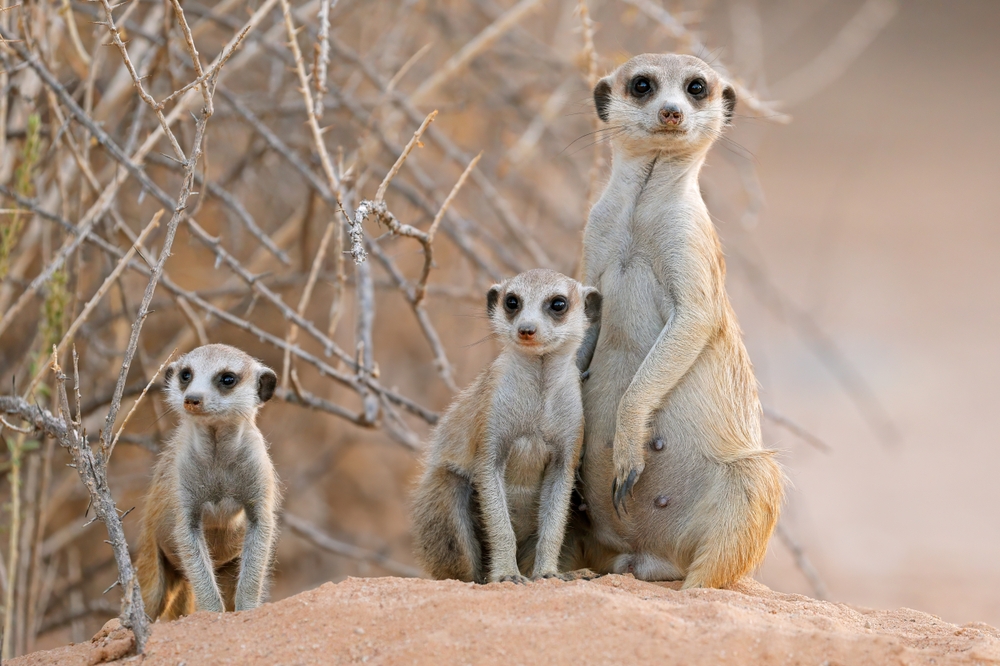
Meerkats, those adorable burrow-dwelling mammals, are small but mighty when it comes to protectiveness. Living in large, social groups called mobs, they have a highly organized system for keeping watch. As highlighted by Science in School, one meerkat will stand as a sentinel, scanning the horizon for danger while the rest of the group forages or rests. If a predator is spotted, the lookout will alert the group with a series of warning calls. It’s a system that relies on trust and teamwork, ensuring that everyone takes turns looking out for danger.
Meerkats also teach their young how to handle threats, a crucial survival skill. Their protective nature is so ingrained that they sometimes adopt and raise orphaned pups from other groups. This sense of community and shared responsibility is what makes meerkats such fascinating creatures to observe. Plus, have you ever seen a meerkat mob band together to face a snake? It’s a perfect example of courage in numbers and a testament to their protective instincts.
3. Wolves
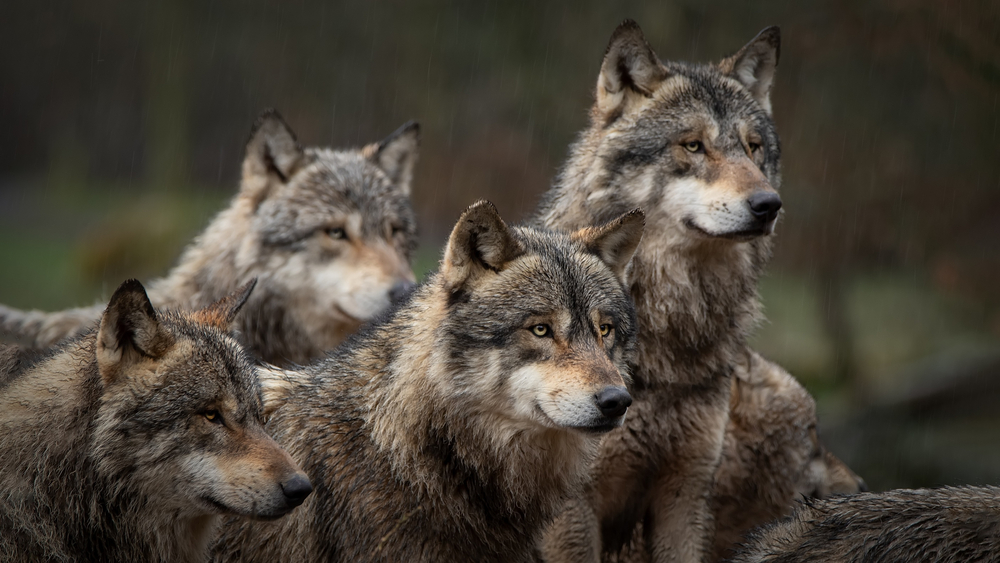
Wolves are the epitome of team players when it comes to protectiveness. Living in tight-knit packs, they rely on each other for everything from hunting to raising pups. The alpha pair leads the way, but every pack member plays a crucial role in keeping the group safe. If a threat appears, wolves will band together, using their strength in numbers to ward off danger. It’s this collective effort that keeps their families safe, united, and thriving in the wild.
The pack’s communal care for young ones is also remarkable. While the alpha female typically gives birth, the entire pack helps care for the pups, bringing food and participating in play that teaches essential survival skills. This shared responsibility not only ensures the safety of the young but also strengthens the bonds within the pack. It’s a constant cycle of care and protection that keeps the pack resilient. Wolves show us that when it comes to protection, it’s all about teamwork and unity.
4. Polar Bears
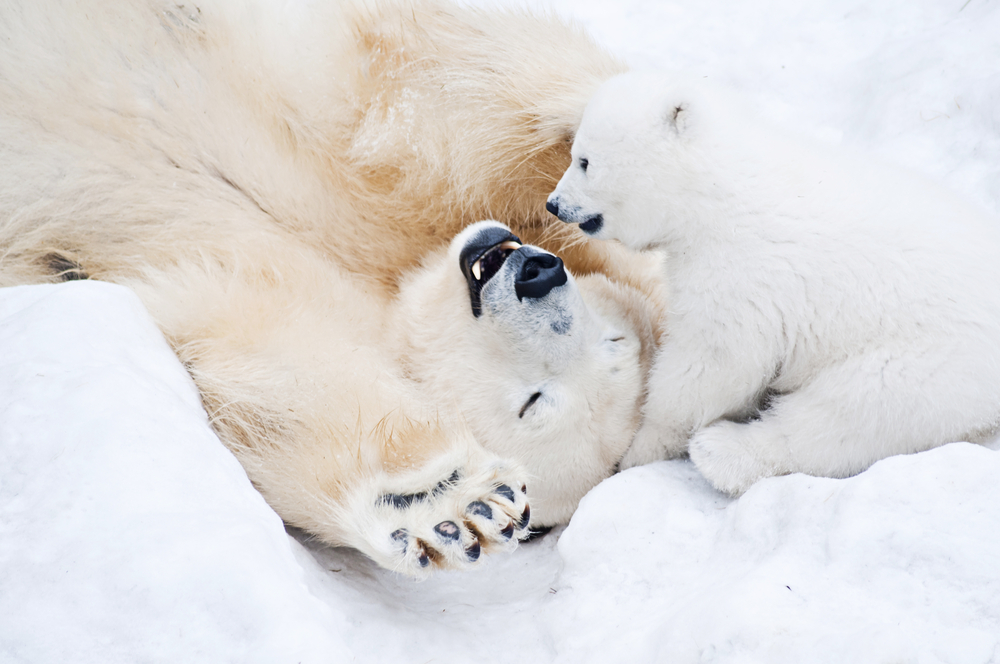
Polar bears are often seen as solitary creatures, but when it comes to mothers and their cubs, they’re fiercely protective. A polar bear mom will go to great lengths to safeguard her young from predators and the harsh Arctic environment. She’ll build a den in the snow, providing a warm and safe space for her cubs to grow during their first few months. Once outside, she teaches them how to hunt and navigate the ice, always keeping a vigilant eye out for danger. Her ability to adapt and protect in such a challenging habitat is truly remarkable.
The bond between a polar bear mother and her cubs is both tender and formidable. She is their primary teacher and protector until they’re ready to venture out on their own. During this time, she will fiercely defend them from any threat, including other polar bears. The intense dedication of a polar bear mom is a powerful reminder of the lengths to which some animals will go to ensure the safety and survival of their offspring. It’s a testament to the incredible instincts these creatures possess, even in the most extreme conditions.
5. Gorillas
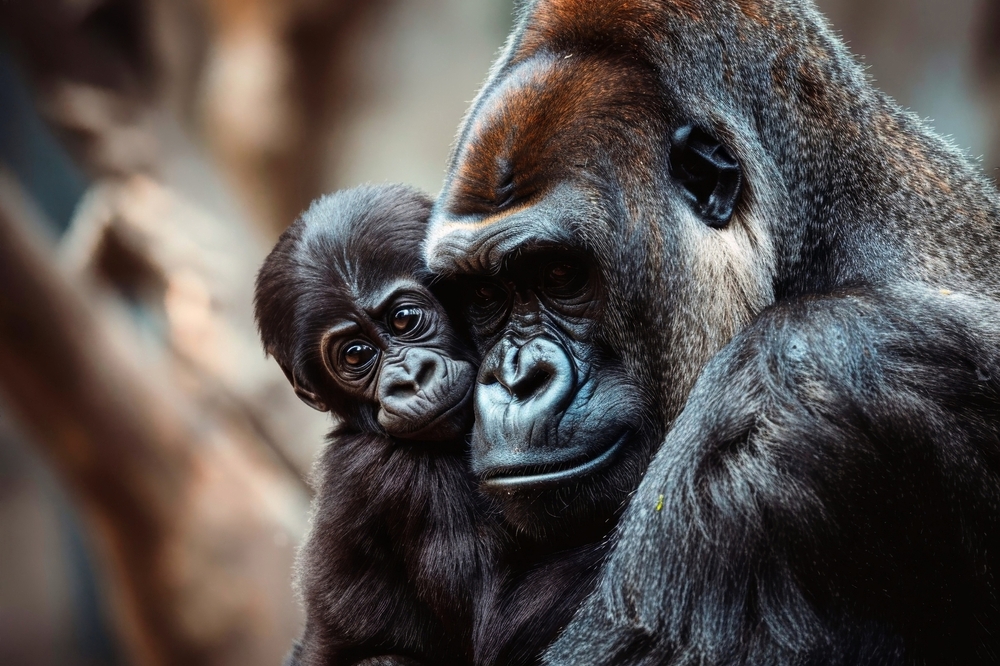
Gorillas might have an intimidating presence, but those who know them best understand their gentle and protective nature, especially regarding their families. They live in groups led by a dominant male called a silverback, who takes on the role of protector. The silverback will defend his troop against any potential threat, using his size and strength to intimidate predators. His role isn’t just about defense; he also mediates conflicts within the group and ensures harmony. It’s a complex leadership role balancing strength and compassion.
The female gorillas are equally protective, particularly of their young. A mother gorilla will keep her baby close, nurturing and shielding it from any harm. The group’s cooperative care extends to all offspring, creating a secure and nurturing environment. This communal approach guarantees that every member of the troop is looked after, fostering a strong sense of unity. Gorillas show us that true strength lies not just in muscle, but in heart, too.
6. Cheetahs
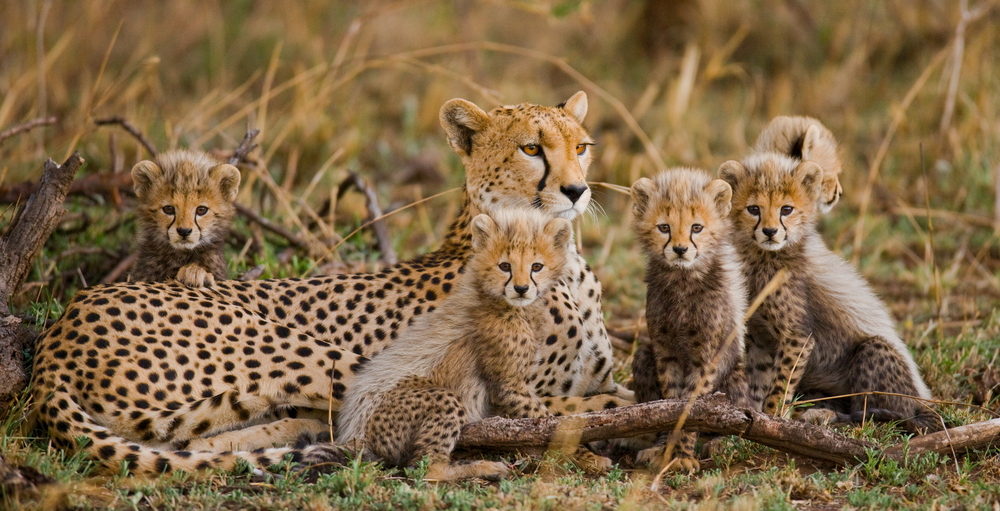
Cheetah mothers are the ultimate solo protectors, raising and shielding their cubs without the support of a group. These big cats face numerous challenges, including threats from larger predators like lions and hyenas. To keep her cubs safe, a cheetah mom will frequently move them to new hiding spots, masking their scent to avoid detection. She is constantly on the alert, prepared to defend her young with speed and agility. This dedicated vigilance continues until the cubs are old enough to fend for themselves.
During their early months, cheetah cubs learn essential survival skills from their mother. She teaches them to stalk and chase prey, gradually introducing them to the art of hunting. This hands-on education is crucial for their development and future independence. Despite the dangers, the bond between a cheetah mother and her cubs is incredibly strong, built on trust and unwavering protection. It’s a testament to the fierce dedication required to ensure their survival in the wild.
7. Dolphins
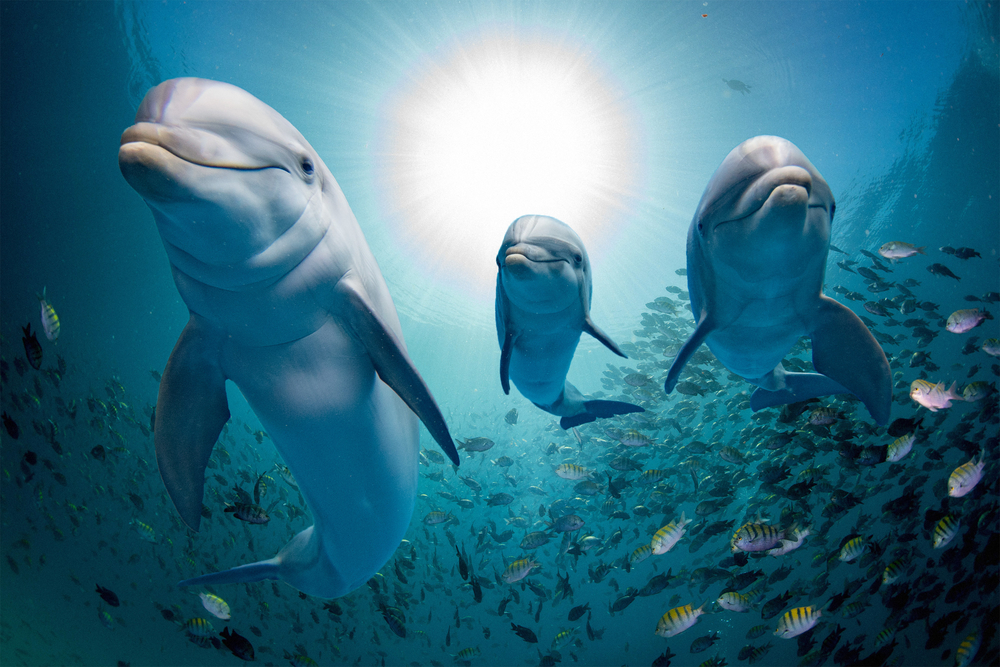
Dolphins are not only intelligent but also incredibly protective, especially when it comes to their pods. Living in closely-knit social groups, dolphins work together to keep each other safe from threats like sharks. They use sophisticated communication and teamwork to deter predators, often seen circling and intimidating the threat as a united front. This cooperative defense mechanism highlights their strong social bonds and loyalty to each other. It’s a testament to how their intelligence plays a key role in their protective strategies.
Dolphin mothers are particularly attentive, maintaining close bonds with their calves. They guide their young through the ocean, teaching them vital skills necessary for survival. Should a calf become separated or in danger, other pod members often step in to assist, showcasing a community approach to protection. It’s a heartwarming display of care and cooperation that reflects their social nature. Dolphins remind us that intelligence and empathy go hand in hand when it comes to safeguarding their own.
8. Alligators
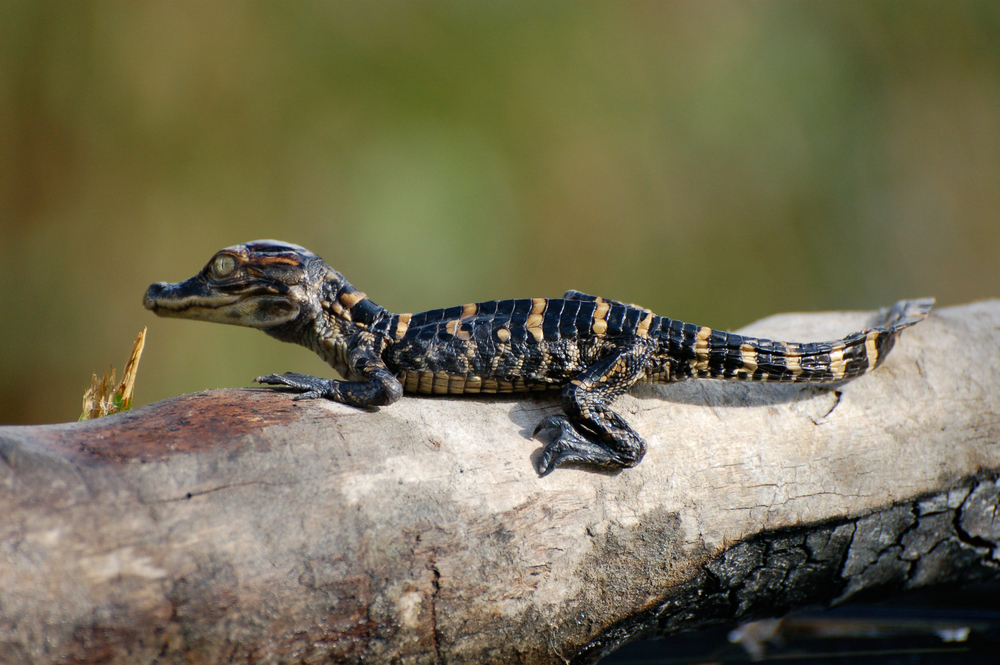
Alligators might not be the first creatures that come to mind when you think of protective animals, but mother alligators are surprisingly attentive. After laying her eggs, she will guard the nest fiercely until they hatch, ready to fend off any potential threats. Once the baby alligators emerge, she carries them gently in her mouth to the water’s edge, ensuring their safe passage. Her role as a protector doesn’t end there; she continues to watch over them as they grow, providing guidance and defense. This vigilant care is crucial for the young alligators’ survival in a dangerous environment.
The sight of a mother alligator surrounded by her young is a powerful reminder of the protective instincts that run deep in the animal kingdom. Her fierce dedication ensures that the majority of her offspring reach maturity. Despite their fearsome reputation, alligators showcase a tender side when it comes to their young. This juxtaposition of strength and care is what makes their parental behavior so fascinating. Mother alligators exemplify the lengths to which animals will go to protect their progeny, no matter the species.
9. African Buffalo
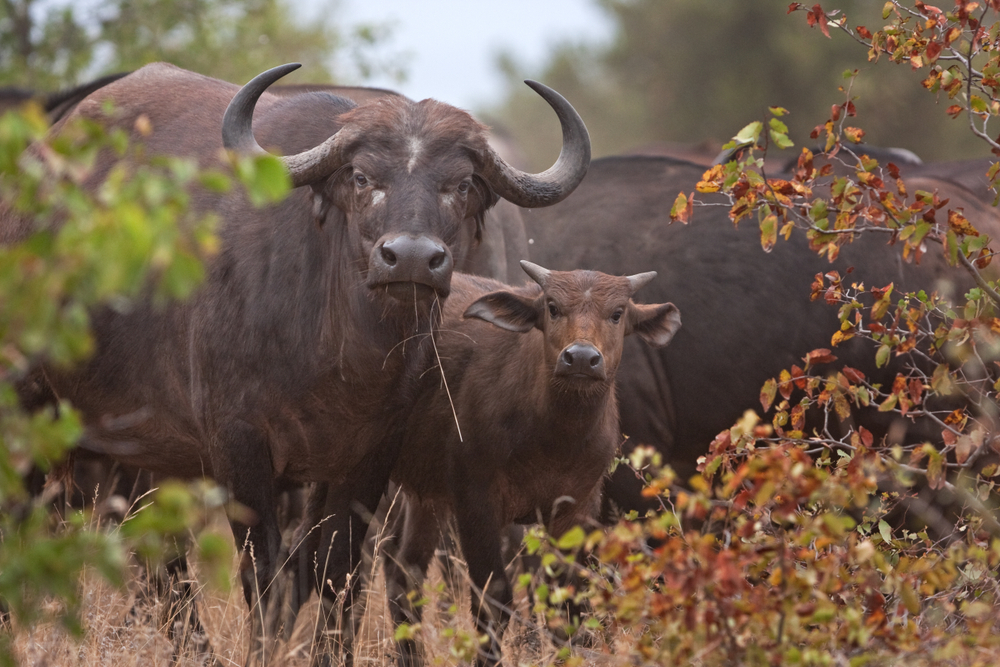
African buffalo are known for forming close-knit herds where protection is a collective effort. These formidable creatures use their numbers to their advantage, creating a formidable defense against predators like lions. When threatened, the herd will form a protective circle around the vulnerable members, such as calves and the injured. This strategic positioning allows them to defend as a unit, often deterring even the most determined predators. Their dedication to community safety is a striking example of strength in numbers.
The herd’s leadership is a shared responsibility, with both males and females taking roles in protecting the group. The buffalo’s relentless teamwork ensures that every member is looked after, creating a tight-knit community that thrives on cooperation. This social structure is not only effective in defense but also in teaching the young about survival. African buffalo demonstrate that protectiveness is deeply rooted in unity and collaboration. Their cooperative spirit is a testament to the power of working together for the greater good.
10. Honey Bees
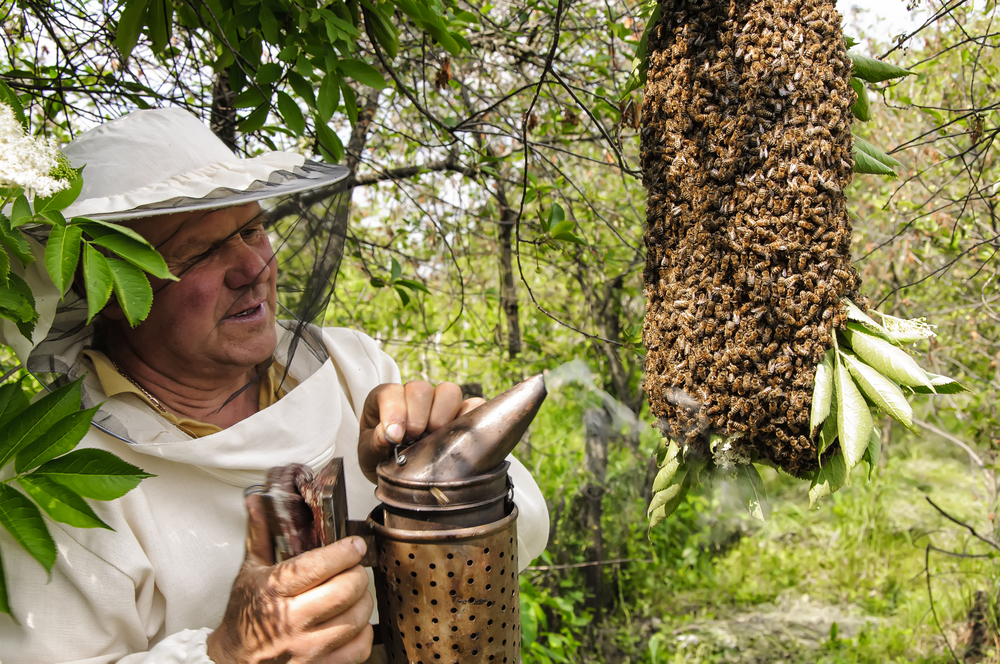
Honeybees are fascinating creatures, not only for their role in pollination but also for their incredibly protective nature. Within the hive, every bee has a role to play, and the security of the queen and the colony is a top priority. Worker bees will defend the hive fiercely against intruders, willing to sacrifice themselves if necessary. They communicate through complex dances and pheromones to coordinate their defense strategies. This highly organized social structure ensures that the colony operates like a well-oiled machine.
The queen bee is the center of the hive’s universe, and her safety is paramount. The worker bees’ dedication to her protection speaks volumes about their collective loyalty. Even in the face of danger, the hive functions as a united front, each bee playing an essential role in its defense and survival. It’s a remarkable display of teamwork and selflessness for the greater good. Honey bees remind us that sometimes the smallest creatures have the most profound sense of duty and protectiveness.
11. Octopuses
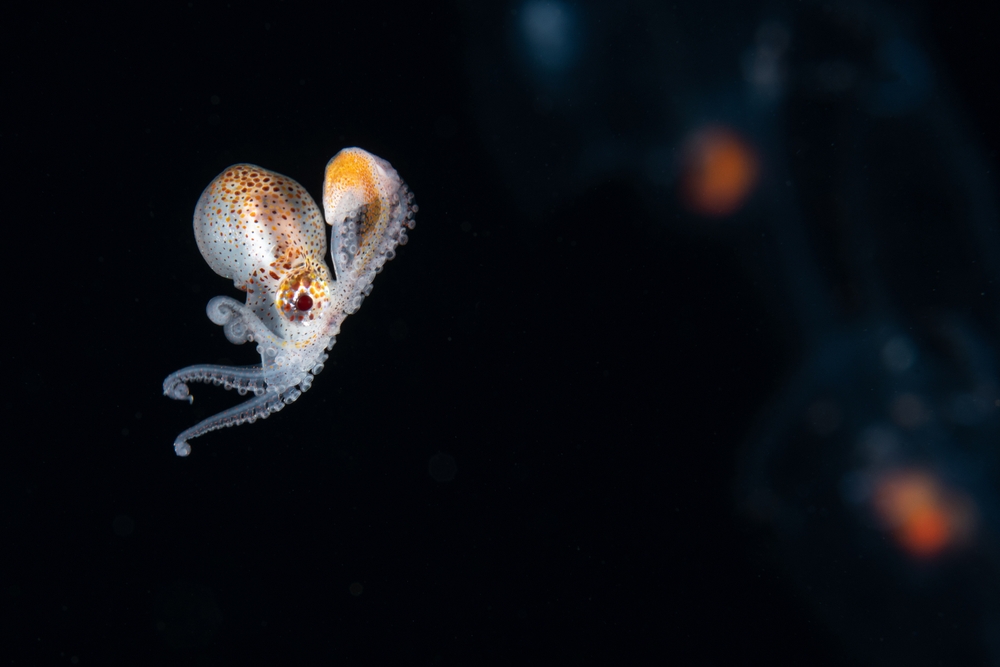
Octopuses might be solitary creatures, but when it comes to protecting their eggs, they take parental dedication to a whole new level. A female octopus will find a secluded, safe spot to lay her eggs, often in a crevice or cave. She then guards them for weeks or even months, keeping them clean and aerated while fending off predators. During this time, she doesn’t eat, sacrificing her well-being for the survival of her offspring. This intense commitment often results in the mother dying shortly after the eggs hatch, illustrating the ultimate act of selflessness.
The care and protection provided by a mother octopus are nothing short of extraordinary. Her vigilant efforts ensure that her young have the best possible start in life. It’s a testament to the incredible lengths some animals go to for the sake of their progeny. This dedication to protection, even at the cost of her own life, is a powerful reminder of the instinctual drive to nurture and safeguard. Octopuses show us that true protectiveness knows no bounds.
12. Sea Otters
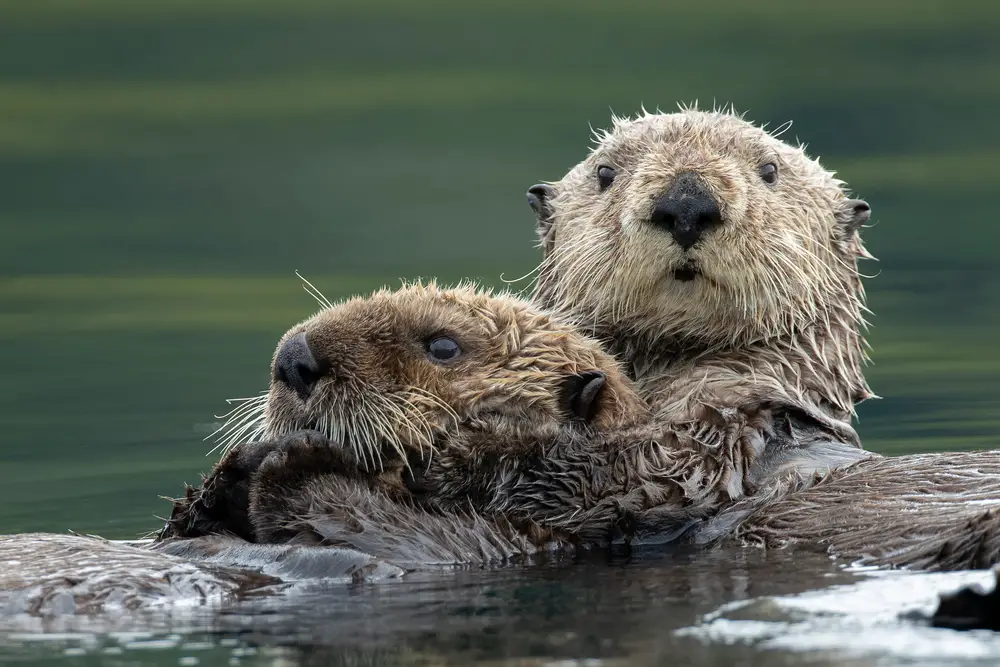
Sea otters are not only adorable but also incredibly protective, especially when it comes to their pups. A mother sea otter will cradle her young on her belly, keeping them safe and warm while floating on her back. She will often wrap her pup in kelp to ensure it doesn’t drift away while she forages. This thoughtful action highlights the care and attention she gives to her offspring. Her protective nature is crucial for the pup’s survival in the sometimes harsh marine environment.
Sea otter mothers are constantly vigilant, always on the lookout for potential threats. Their dedication to their young is matched by their ability to teach essential survival skills, such as how to dive and find food. The bond between a mother sea otter and her pup is built on trust and unwavering guardianship. This protective behavior ensures the pup’s growth and development, setting it up for future success. Sea otters remind us that the smallest gestures can have the biggest impact when it comes to protection.
13. Emperor Penguins
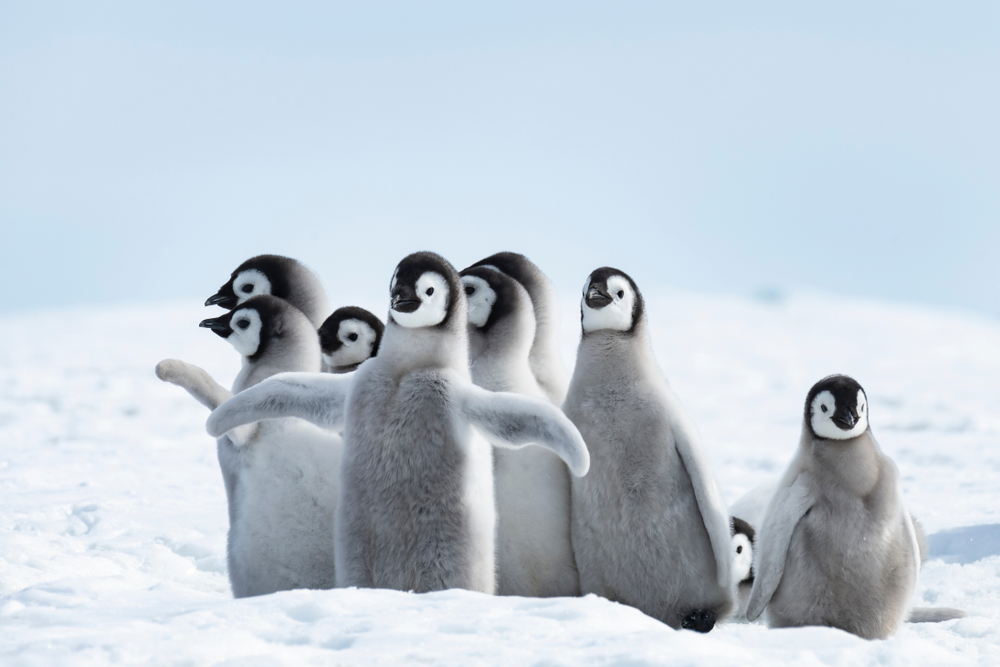
Emperor penguins are famous for their grueling journey to raise their young in the harsh Antarctic environment. These resilient birds are champions of teamwork and protection, particularly during the brutal winter months. After the female lays a single egg, it’s the male’s turn to take over, balancing the egg on his feet and covering it with a warm flap of skin. This form of protection is crucial, as exposure to the cold can be fatal for the developing chick. The male penguins huddle together for warmth, creating a protective barrier against the freezing temperatures.
This cooperative effort among the males is a remarkable display of unity and shared responsibility. Once the female returns, she takes over feeding and caring for the newly hatched chick. The parents’ tireless dedication to protecting and nurturing their young in such a challenging environment is awe-inspiring. It’s a testament to the power of collaboration and the lengths to which animals will go to ensure their offspring’s survival. Emperor penguins show us that even in the harshest conditions, protectiveness can thrive.
14. Kangaroos
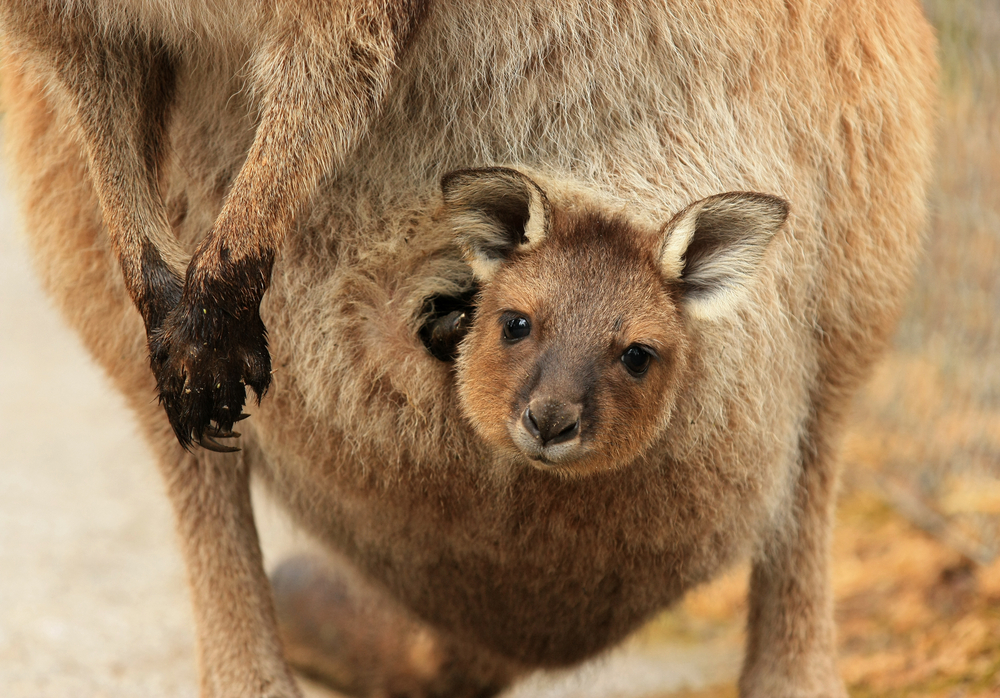
Kangaroos are well-known for their unique way of caring for their young, known as joeys. These marsupials have a specialized pouch where the joey continues to develop after birth. The mother kangaroo keeps her joey safe and secure in this pouch, providing warmth, nourishment, and protection. She is ever-watchful, ready to shield her little one from potential threats at a moment’s notice. This natural protection system ensures the joey has the best start in life.
The bond between a mother kangaroo and her joey is incredibly strong, fueled by her unwavering dedication to its safety. She teaches the joey essential skills, preparing it for the challenges of the outside world. Once the joey starts venturing out, she remains close by, ready to intervene if necessary. This gradual process of protection and independence nurtures the young kangaroo’s growth and development. Kangaroos remind us that sometimes, the most effective form of protection is simply being there, watching over, and guiding the next generation.
